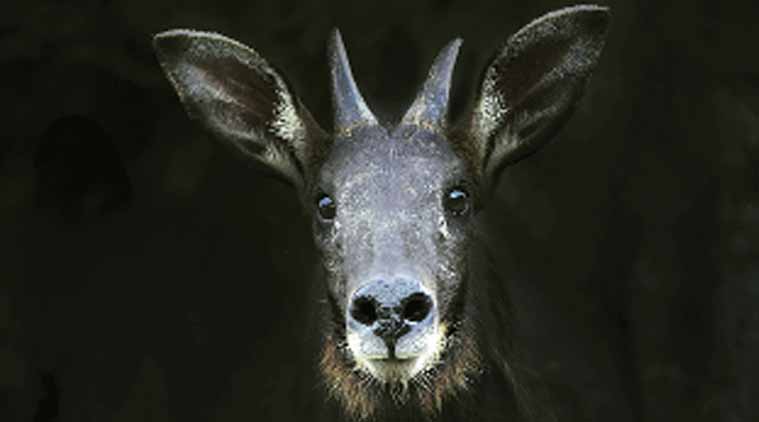- India
- International
In the hills of Mizoram, mystery deaths of a shy mammal
Officials could locate four carcasses in April, and going by villagers’ claims, about another dozen may have died.
 Serow carcasses have been found with a deadly skin infection. (Source: Reuters)
Serow carcasses have been found with a deadly skin infection. (Source: Reuters)
Why are serows dying in Mizoram?
No one knows for sure; most carcasses found so far are too badly decayed to extract meaningful blood and viscera samples from. There also isn’t enough veterinary expertise. But from whatever imagery has been found, and according to descriptions by villagers who claim to have seen the dead animals, officials believe the most likely reason for the deaths is a disease known as Sarcoptic Mange.
What is this disease?
It is caused by a kind of mites, which can also attack domesticated animals, and pets such as dogs. Forest officials believe the serows may have been suffering from a terrible itch for several months, making them unable to forage for food, and weakening them gradually.
[related-post]
How many serows have died so far?
It is difficult to say. It is possible the animals have been dying for the last five months. Officials could locate four carcasses in April, and going by villagers’ claims, about another dozen may have died. Earlier this month, one animal died soon after being caught, and 10 more semi-decayed carcasses, all with exacerbated skin disease, were found. In all, 28 serows may have died so far.
Should we be worried about the deaths?
The serow is a small antelope-like animal that is usually found alone, or in pairs during the mating season, and is a Schedule 1 protected animal under the Wildlife Act. The Himalayan serow (Capricornis thar) species to which Mizoram’s ill animals belong, is classified as “near threatened” by the International Union for the Conservation of Nature, or IUCN, which says the “species is believed to be in significant decline”. The serow is known to be extremely shy and secretive, and in Mizoram, locals say they are difficult to hunt even with the help of experienced hunting dogs. There are no estimates for the population of the animal in the state. Because the serows roam free, tackling an epidemic of Sarcoptic Mange, if it is indeed that, is almost impossible for the government.
More Explained
EXPRESS OPINION
May 05: Latest News
- 01
- 02
- 03
- 04
- 05







































